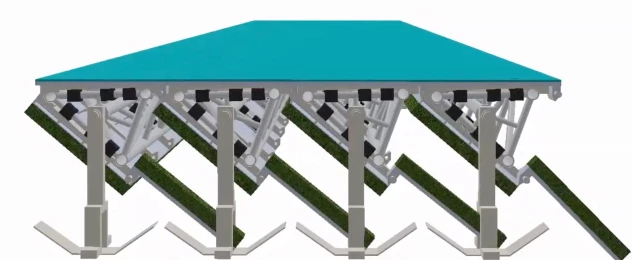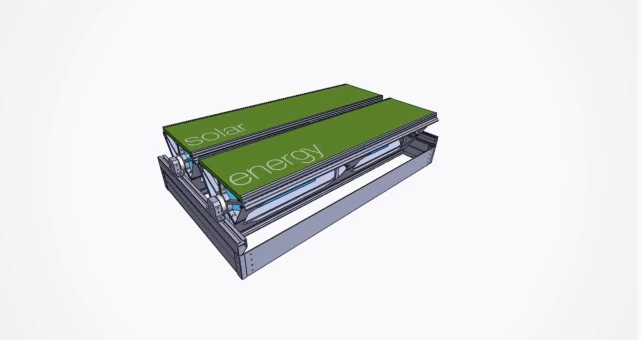Some sports venues – think indoor basketball courts/ice hockey rinks – use their space to support multiple sports. LEDSSPORT's Pulastic LED Court and ASB's GlassFloor both use LEDs to redraw line marking to suit different sports, but the new 4D Sportsground being developed in The Netherlands takes the concept to the next level, delivering a sports field that seamlessly rotates between three separate surfaces. Its designers hope to develop a field that spends 24 hours a day in use.
The 4D Sportsground uses a series of panels to form full surfaces. The prismatic machinery operating below ground level rotates the panels to form three distinct surfaces. One set of panels creates a soccer field out of artificial turf; one creates a multi-sport plastic court; and one is designated for non-sport revenue usage, such as billboard advertising or solar panels.
With the system in place, one park field can host multiple sets of sports and harvest energy or earn advertising income during its down time. Instead of a cold, abandoned field in winter, you have a revenue-earning solar field. The parties believe it can help sports clubs to be self-sustaining, earning the income needed to pay for expenses.
The 4D Sportsground was conceived last year by Dutch outfits Sublean and InnosportNL and is being constructed with the help of several other partners, including ProFit, a European Union-funded organization that supports sports innovation. It is being built at ProFit's field-lab in Eindhoven, Netherlands.

ProFit operates several urban field-labs, parks where its partners test new sports equipment and activities for public analysis and feedback. Sportsground designers will collect feedback about the users' experiences and use it in pursuing a possible commercial version of the rotating sports field. The Eindhoven test field will open within the next few months.
The 4D Sportsground utilizes what Sublean calls Cablean Technology, which it describes as the "world's first durable three-dimensional surface technology." Sports fields are just one of many applications of the technology, and the company is most interested in using Cablean panel systems to get more use out of infrastructure, including buildings, homes, fences, billboards and more.
For instance, it imagines equipping buildings with rotating walls so that the buildings themselves become multi-functional – harvesting energy with solar panels and showcasing advertising or artistic lighting, for instance. It completed the concept in 2009, achieved its first industrial application last year and has plans to outfit Amsterdam Arena with a 4D facade this year.
The video below shows a little more about what ProFit calls the "first 4D sports ground in the world."
Source: ProFit












